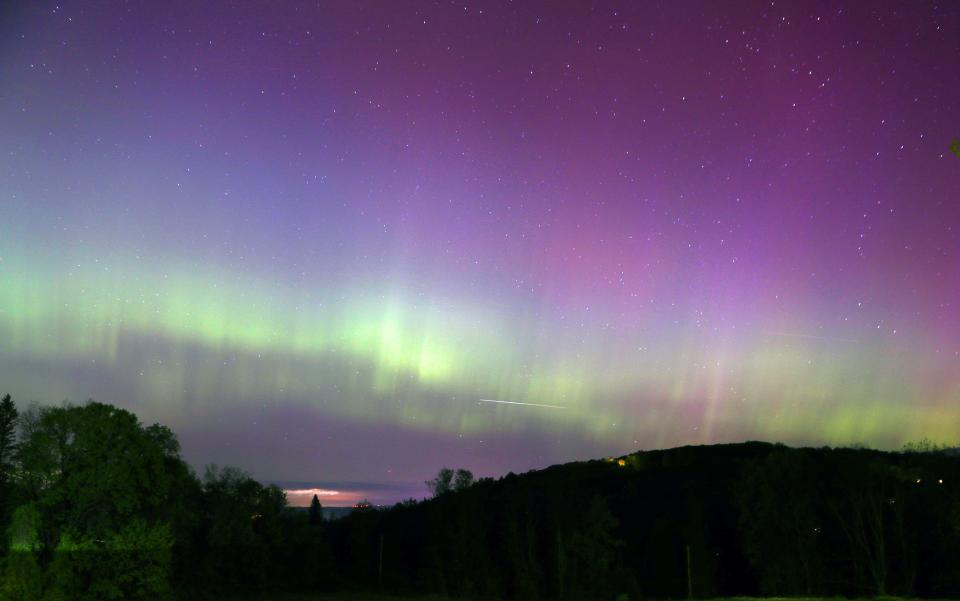Another solar storm is predicted to hit Earth on Friday, potentially giving residents of northern states another chance to view the aurora borealis. This storm is the result of a coronal mass ejection from the sun, following a solar flare on May 29. The Space Weather Prediction Center forecasts a moderate geomagnetic storm, with an intensity level of 2 out of 5, arriving on the evening of May 31 and lasting through the morning of June 1. While the chance of seeing the lights is dependent on conditions, some northern and upper Midwest states may get a glimpse.
The best time to view the northern lights is during the darkest hours of the night and early morning. Friday’s lights are expected to be visible between 11 p.m. and 1 a.m., with the possibility of viewing extending until about 3 a.m. However, the viewing conditions are still uncertain, with the aurora potentially being visible over states such as New York, Michigan, Vermont, and Wyoming. Those interested in seeing the lights are advised to monitor the Space Weather Prediction Center’s website for updates and conditions.
The northern lights are a luminous glow seen around the magnetic poles of the Earth, creating ribbons of colorful light in the night sky. Known as aurora borealis in the northern hemisphere and aurora australis in the southern hemisphere, these polar lights are a result of the sun interacting with the Earth’s atmosphere. Electrically charged particles from the sun collide with gases in the Earth’s atmosphere, producing flashes of light that appear as moving colors in the sky.
Auroras are generated when solar winds from the sun interact with the Earth’s magnetosphere, causing particles and gases to produce the colorful displays in the sky. While Earth’s magnetic field usually protects the planet from solar winds, strong winds can occasionally bypass the field, allowing for interactions that result in the stunning northern lights. The phenomena are typically seen around the magnetic poles of the Earth, creating a breathtaking natural light show for viewers.
Given that days are getting longer, it is becoming increasingly challenging to spot the aurora, as windows of dark sky are shorter. The connection between the coronal mass ejection and Earth’s magnetic fields during viewing times is crucial for the northern lights to be visible. Should the predicted G1-G2 conditions materialize, Friday night would be the ideal time to be on the lookout for the aurora, with Saturday night being less likely for viewing. Some states that are most likely to have a chance of seeing the lights include New Hampshire, Maine, Rhode Island, North Dakota, and Wyoming.
Overall, the potential for a geomagnetic storm on Friday night may give residents in certain U.S. states another opportunity to witness the beauty of the northern lights. While conditions are still uncertain, monitoring the Space Weather Prediction Center’s updates and being on the lookout during the darkest hours of the night could increase the chances of catching a glimpse of the aurora borealis.








